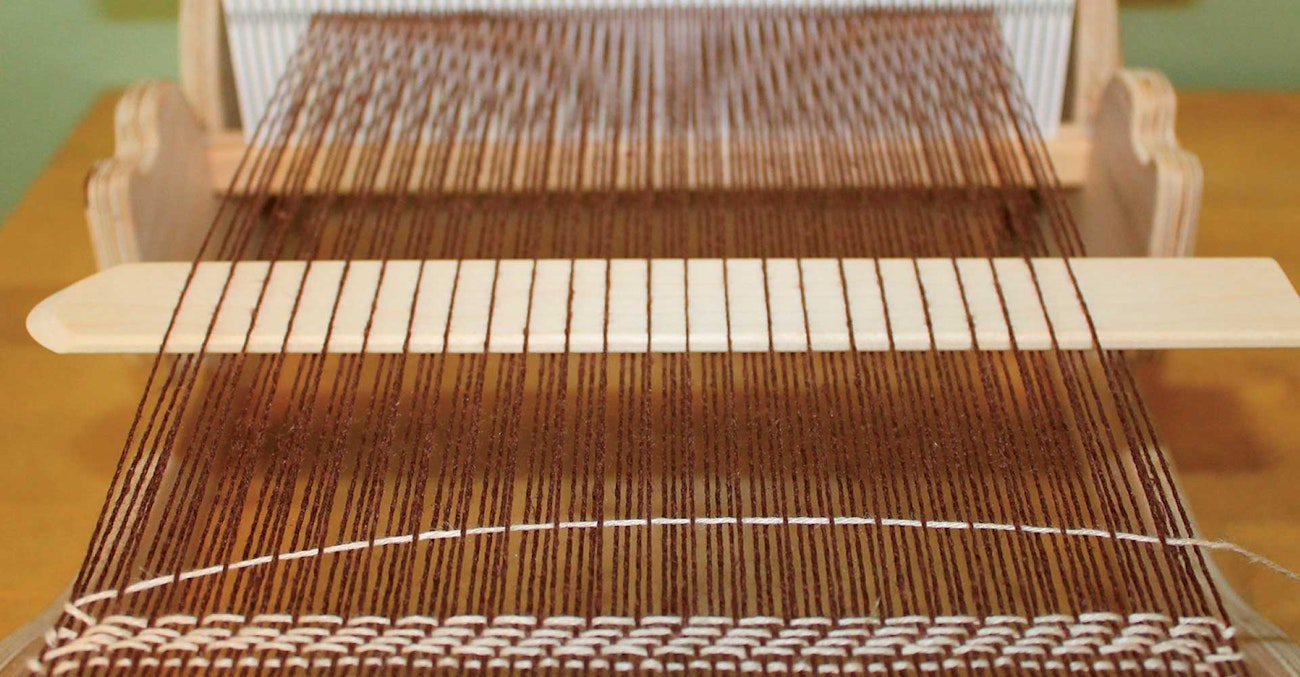As a longtime multishaft weaver, I came to rigid-heddle weaving hesitantly a few years ago. My misconception was that rigid-heddle weaving was not “real” weaving.
However, a local yarn shop was looking for a rigid-heddle weaving teacher, and a guild member pressured me to give them a call. Although I’d never woven on a rigid-heddle loom, I was aware of direct warping, and I agreed to take on the class. I watched some videos, read some books, and within 2 weeks felt capable of teaching my first class, relying on my general knowledge about weaving and yarn, as well as the new techniques I’d just learned. At the time Easy Weaving with Little Looms didn’t exist, but I sure wish it had been around to give me a hand!
Luckily, I inherited a group of eager students who hadn’t yet learned the direct warping method. They also hadn’t yet learned to plan their own projects, so I added that to the first couple of classes. Anyone who has taught weaving can tell you that having a room full of students all working on projects of their own design can be harrowing, but in this case there were only five students; they were patient, and it all worked out fine.
 Picking up ends to weave twill on a rigid-heddle loom.
Picking up ends to weave twill on a rigid-heddle loom.
Some time after the third or fourth class, I needed to step things up, so I taught pick-up techniques, hemstitching, how to warp with two heddles, and how to finish a project. About that time, I came to realize that rigid-heddle weaving has certain advantages over multishaft weaving. I borrowed a loom from my guild and wove several personal projects on it, marveling at the ease of direct warping and the fun of developing a pick-up pattern.
Unfortunately, that yarn store was sold and the new owner decided to cancel weaving classes. Besides the fact that I missed my students, I felt bad for them. All of them had purchased new rigid-heddle looms and wanted to continue learning, but their way forward wasn’t very clear. There was little information available for them, and while Handwoven magazine included some rigid-heddle projects, its primary focus was on multishaft weaving.
When you’re a beginning weaver, it can be hard to advance if you don’t have a teacher or other resources to assist you. One of the best ways to learn is by weaving projects that have been vetted. If you know that the yarn, yardages, sett, and project steps have already been used successfully, you can concentrate on learning new techniques—and then perhaps go on to use them in a project of your own design.
Little Looms to the Rescue
This lack of information about rigid-heddle weaving led to the creation of Easy Weaving with Little Looms. While the first few print issues were published as annual editions, the magazine now appears four times a year, chock-full of rigid-heddle projects and techniques (along with pin-loom, inkle, and tapestry weaving).
Somebody else has figured out the hard stuff for a wide variety of projects, including towels, rugs, scarves, shawls, and more. Each issue also has articles about interesting techniques, some of which are used in multishaft weaving, and others that are unique to rigid-heddle weaving. Last but not least, the projects are creatively designed and well-executed. (Psst—if you’re not a subscriber yet, you can become one here.)
But it’s not just about the print magazine. You can learn rigid-heddle techniques on the website; stay up-to-date with a weekly weaving email newsletter; explore the extensive library of eBooks, projects, tutorials, skill guides, and more; and take video courses about all sorts of rigid-heddle topics.
Whether you’re a new rigid-heddle weaver or one who has woven for a while, you‘ll find projects and techniques that will advance your skills, while providing you with beautiful results.
And if you’re a curious multishaft weaver, I encourage you to explore the pleasures of real weaving on rigid-heddle looms!
Weave well,
Susan
Published July 10, 2018; updated April 30, 2025




